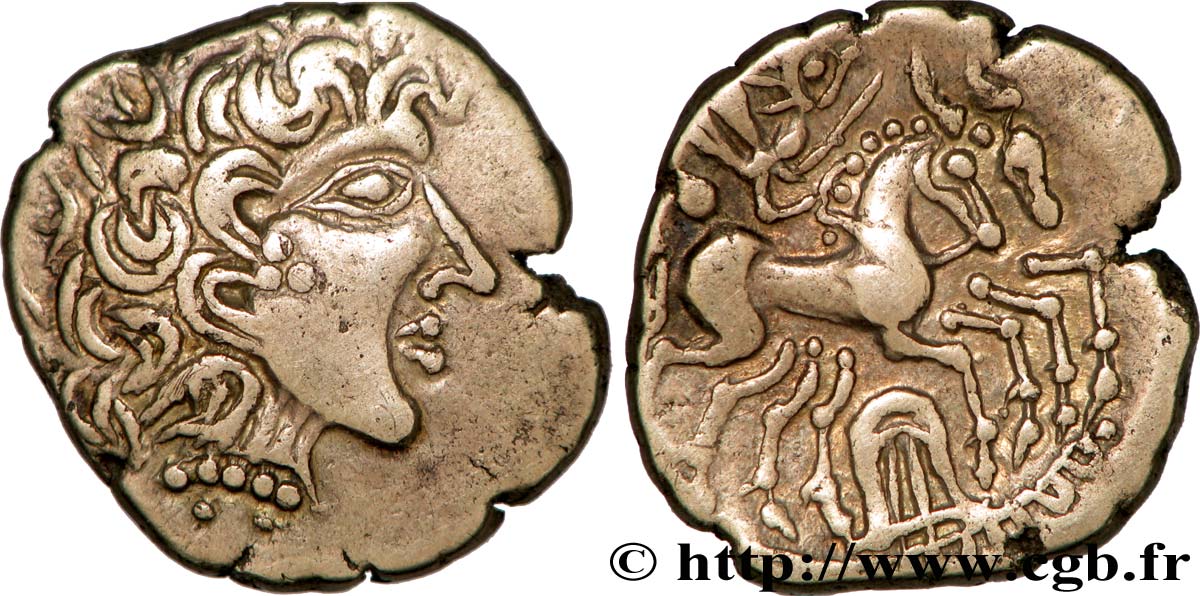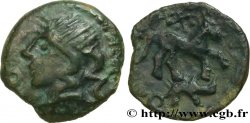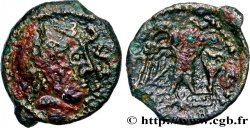Live auction - bga_348220 - GALLIA - CARNUTES (Area of the Beauce) Statère d’électrum à la joue ornée et à la lyre
Чтобы принять участие в торгах, вы должны войти в систему и стать подтвержденным участником аукциона. Войдите, чтобы сделать ставку. Ваш аккаунт будет подтвержден в течение 48 часов. Не ждите до закрытия торгов, чтобы зарегистрироваться.Сделав ставку на данный товар, вы вступаете в юридическое соглашение на покупку выбранного товара и нажатием кнопки «Сделать ставку» подтверждаете принятие вами условий интернет-аукционов cgb.fr.
Ставка может бить сделана только в полном эквиваленте евро. Торги закроются согласно времени, указанному в описании товара, все ставки, сделанные после закрытия торгов, учитываться не будут. Не следует откладывать предложение вашей ставки до последнего момента, так как система может не успеть обработать вашу заявку, и ваша ставка не будет принята. Более детальную информацию вы найдёте здесь: FAQ по интернет-аукционам.
Все ставки победителей подлежат комиссии 18%.
Все ставки победителей подлежат комиссии 18%.
| Оценить : | 5 000 € |
| Цена : | 4 200 € |
| Максимальная предлагаемая цена : | 4 880 € |
| Конец торгов : | 30 June 2015 15:22:31 |
| Участников : | 5 Участников |
Тип Statère d’électrum à la joue ornée et à la lyre
Дата: Ier siècle avant J.-C.
Монетный двор / Город: Chartres (28)
Металл: electrum
Диаметр: 21 mm
Ориентация осей монеты: 7 h.
Вес: 7,05 g.
Редкость: R3
Комментарии о состоянии
Monnaie sur un flan un peu court et irrégulier avec des éclatements de frappe, mais avec de très beaux reliefs et un bel aspect général
Ссылки в каталоге: :
Лицевая сторона
Аверс: легенда: ANÉPIGRAPHE.
Аверс: описание: Tête laurée imitée de Philippe II, très stylisée avec la tête luniforme et l'œil en amande, à droite ; l’oreille ornée d’une boucle à trois brins ; chevelure en mèches complexes.
Обратная сторона
Реверс: легенда: ANÉPIGRAPHE.
Реверс: Описание: Bige à droite conduit par un aurige ; la roue du char sous la queue des chevaux et une lyre renversée entre leurs jambes.
Комментарий
Pour cette série de statères à la lyre, plusieurs classes ont été distinguées. Cet exemplaire correspond à la classe III au profil luniforme et à la joue lisse.
Les quarts de cette série sont presque l’exacte réduction modulaire du statère, mais avec un cheval à la place du bige au revers. Le style du droit et du revers, ainsi que le type de métal utilisé, rapprochent ces monnaies du statère épigraphe KABALLOS CONTI.
Les monnaies anépigraphes de cette série sont souvent d’un très mauvais style, ce qui n’est pas le cas sur cet exemplaire.
For this series of lyre staters, several classes have been distinguished. This example corresponds to class III with a lunar profile and a smooth cheek. The quarters of this series are almost the exact modular reduction of the stater, but with a horse in place of the biga on the reverse. The style of the obverse and reverse, as well as the type of metal used, bring these coins closer to the epigraphic stater KABALLOS CONTI. The anepigraphic coins of this series are often of very poor style, which is not the case on this example
Les quarts de cette série sont presque l’exacte réduction modulaire du statère, mais avec un cheval à la place du bige au revers. Le style du droit et du revers, ainsi que le type de métal utilisé, rapprochent ces monnaies du statère épigraphe KABALLOS CONTI.
Les monnaies anépigraphes de cette série sont souvent d’un très mauvais style, ce qui n’est pas le cas sur cet exemplaire.
For this series of lyre staters, several classes have been distinguished. This example corresponds to class III with a lunar profile and a smooth cheek. The quarters of this series are almost the exact modular reduction of the stater, but with a horse in place of the biga on the reverse. The style of the obverse and reverse, as well as the type of metal used, bring these coins closer to the epigraphic stater KABALLOS CONTI. The anepigraphic coins of this series are often of very poor style, which is not the case on this example








 Cообщить об ошибке
Cообщить об ошибке Распечатать страницу
Распечатать страницу Отправить мой выбор
Отправить мой выбор Задать вопрос
Задать вопрос Consign / sell
Consign / sell
 Информация
Информация










